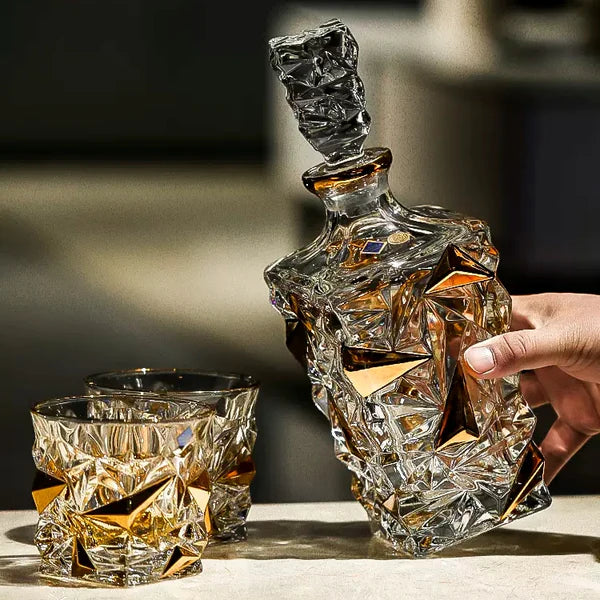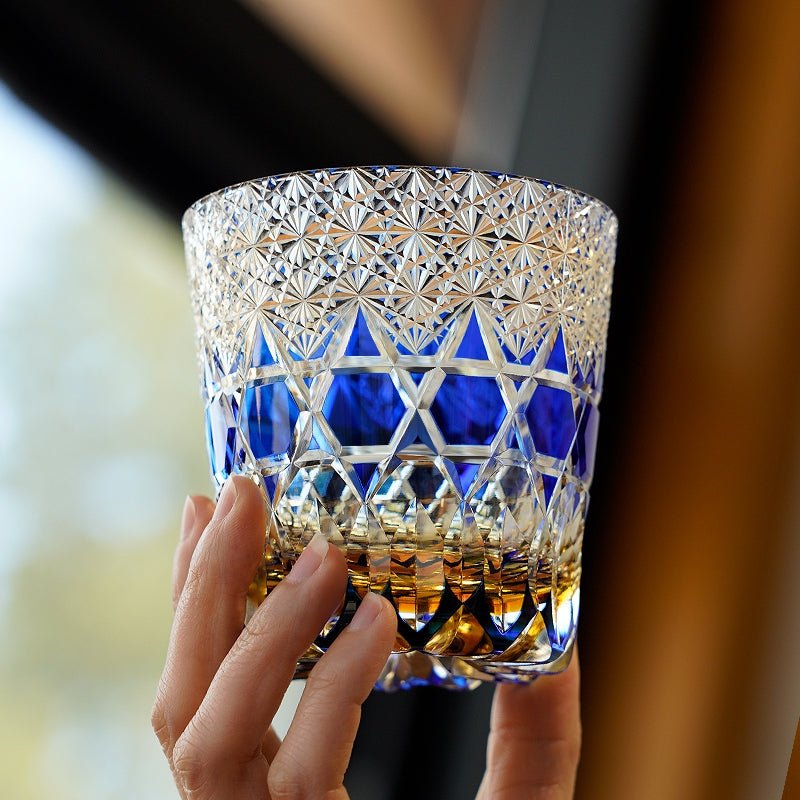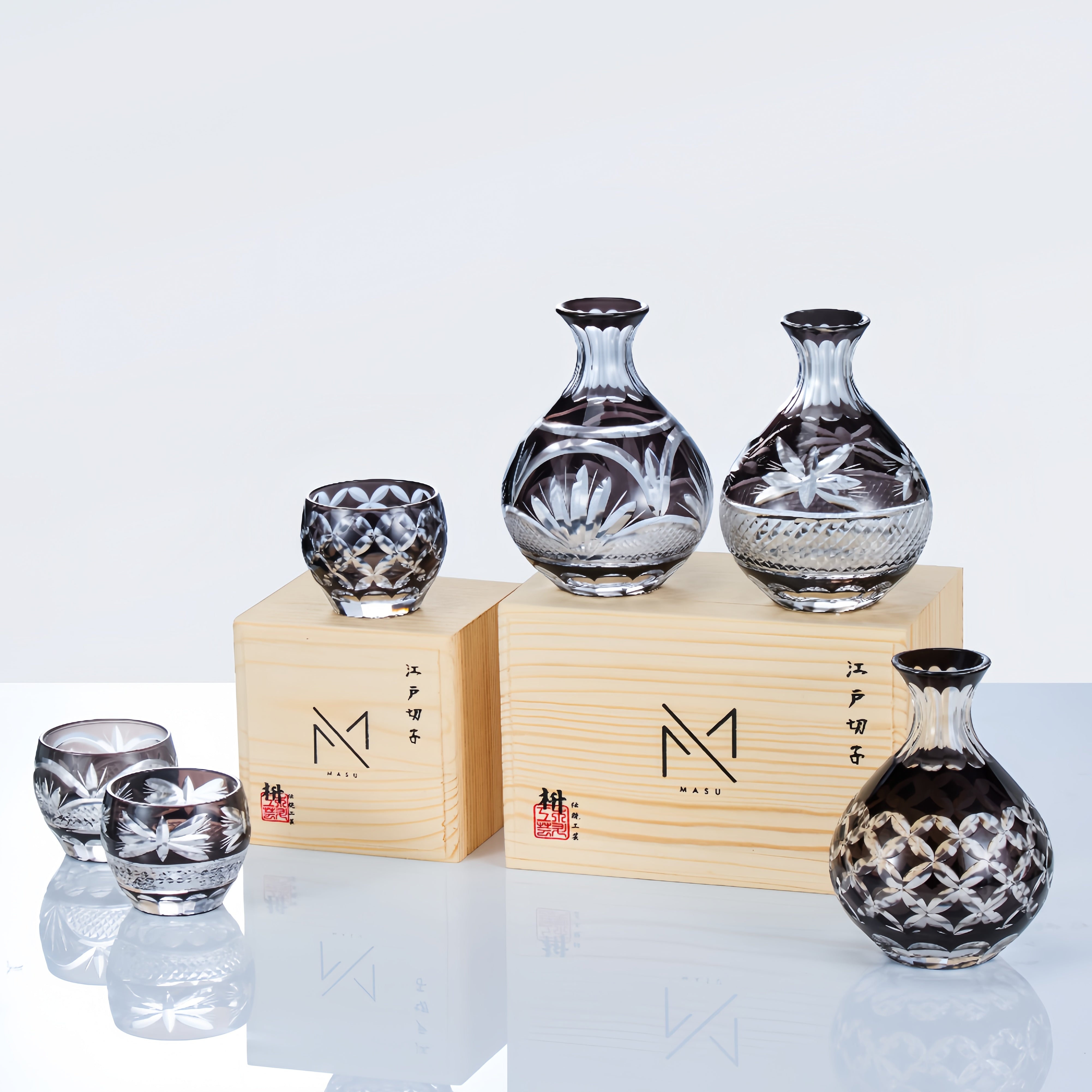
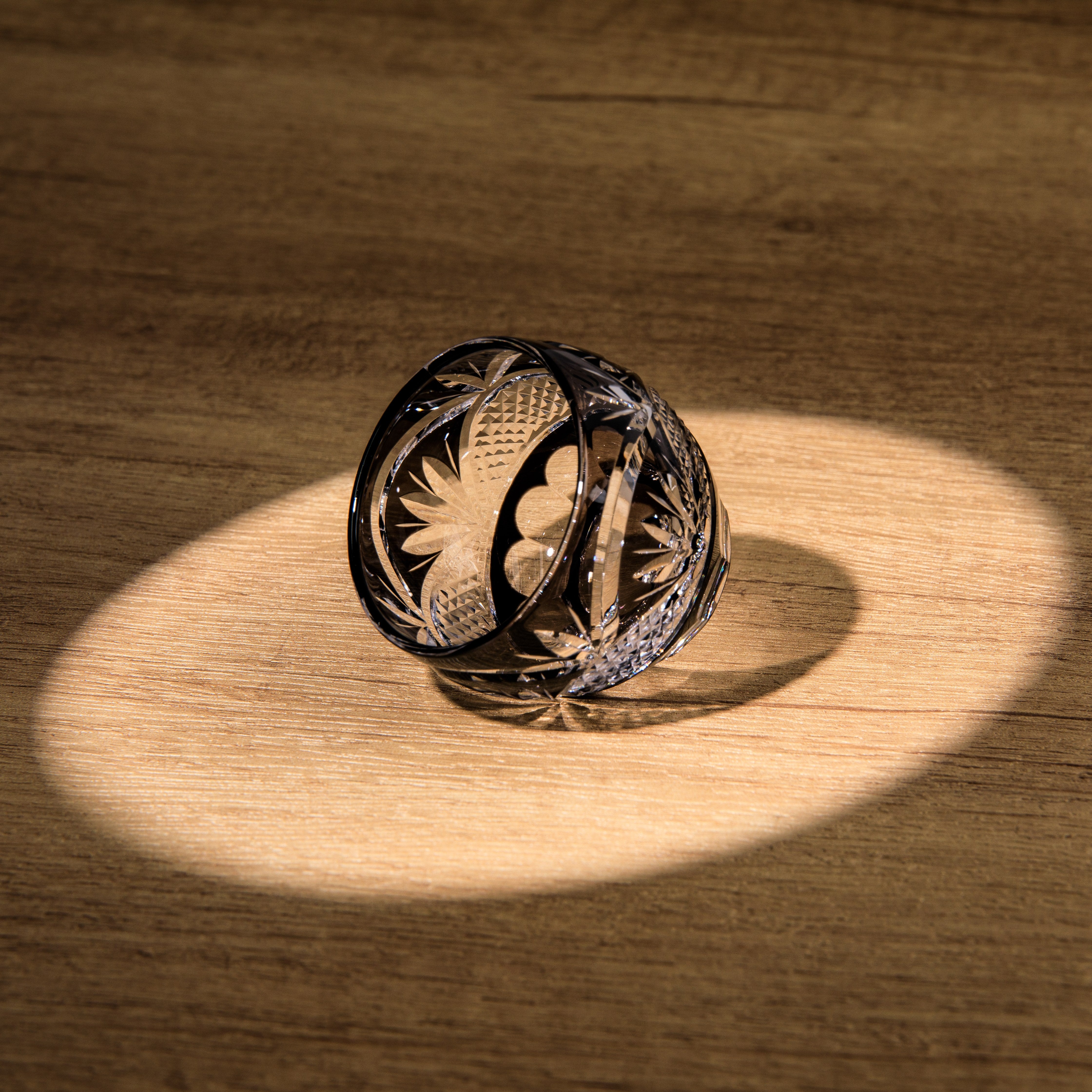
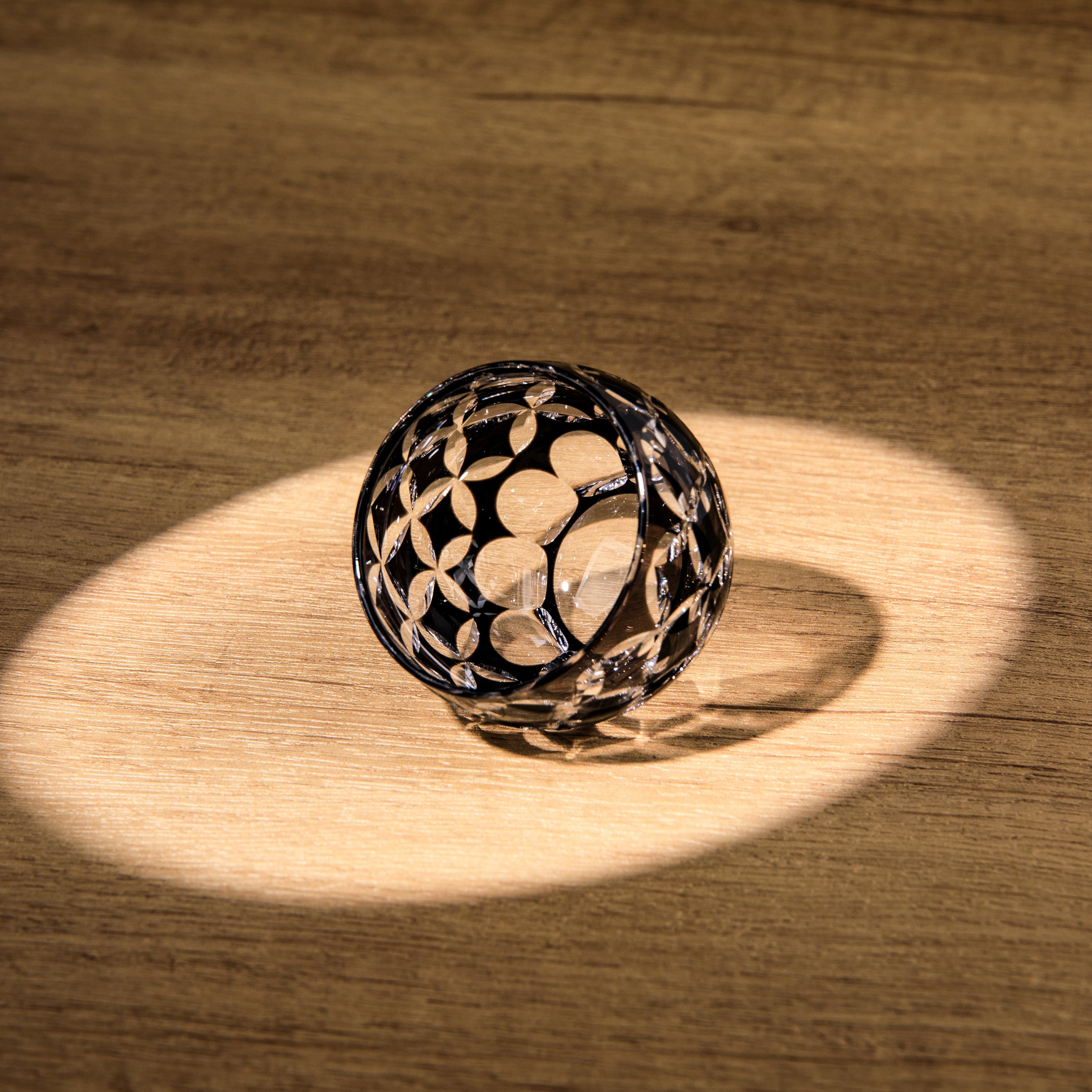
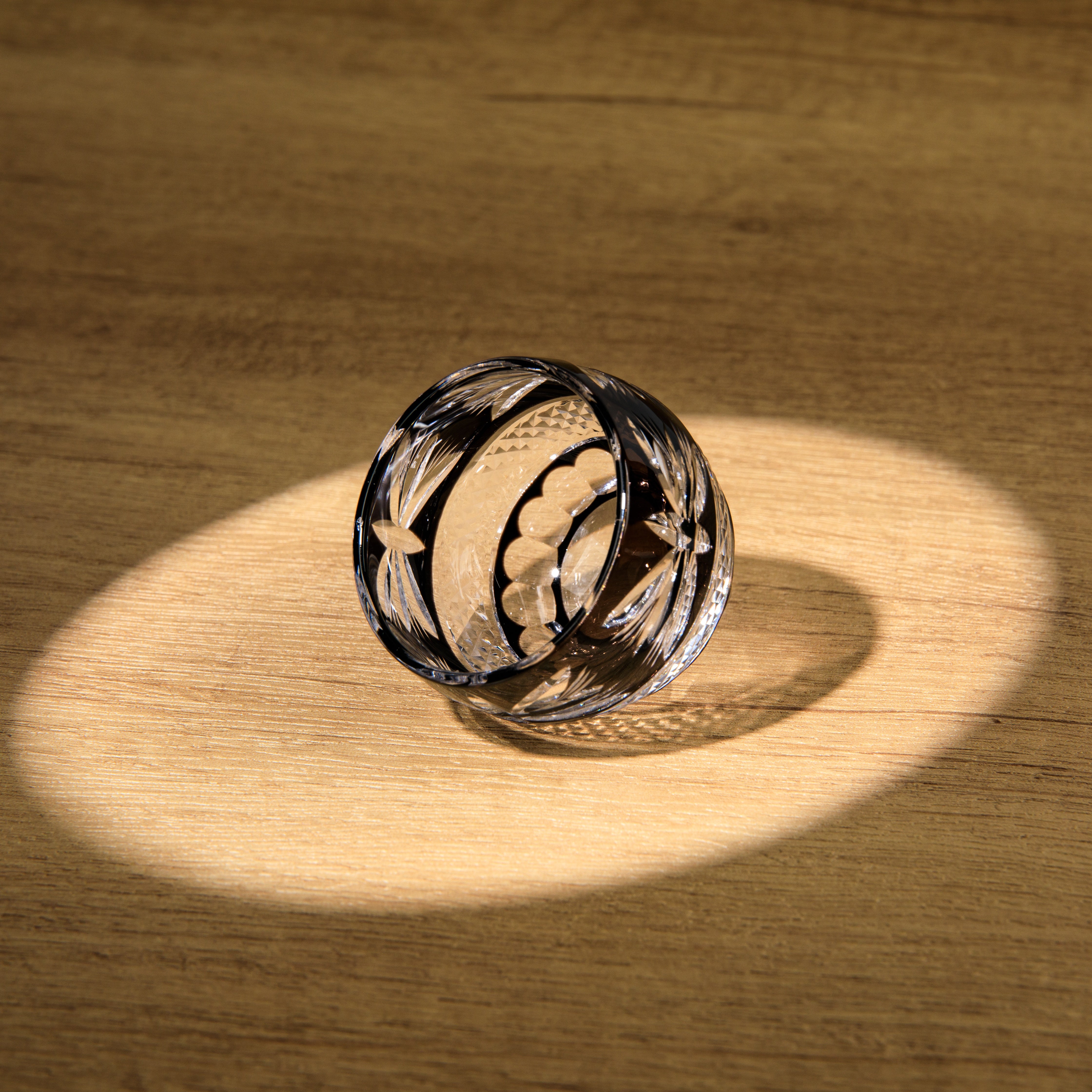
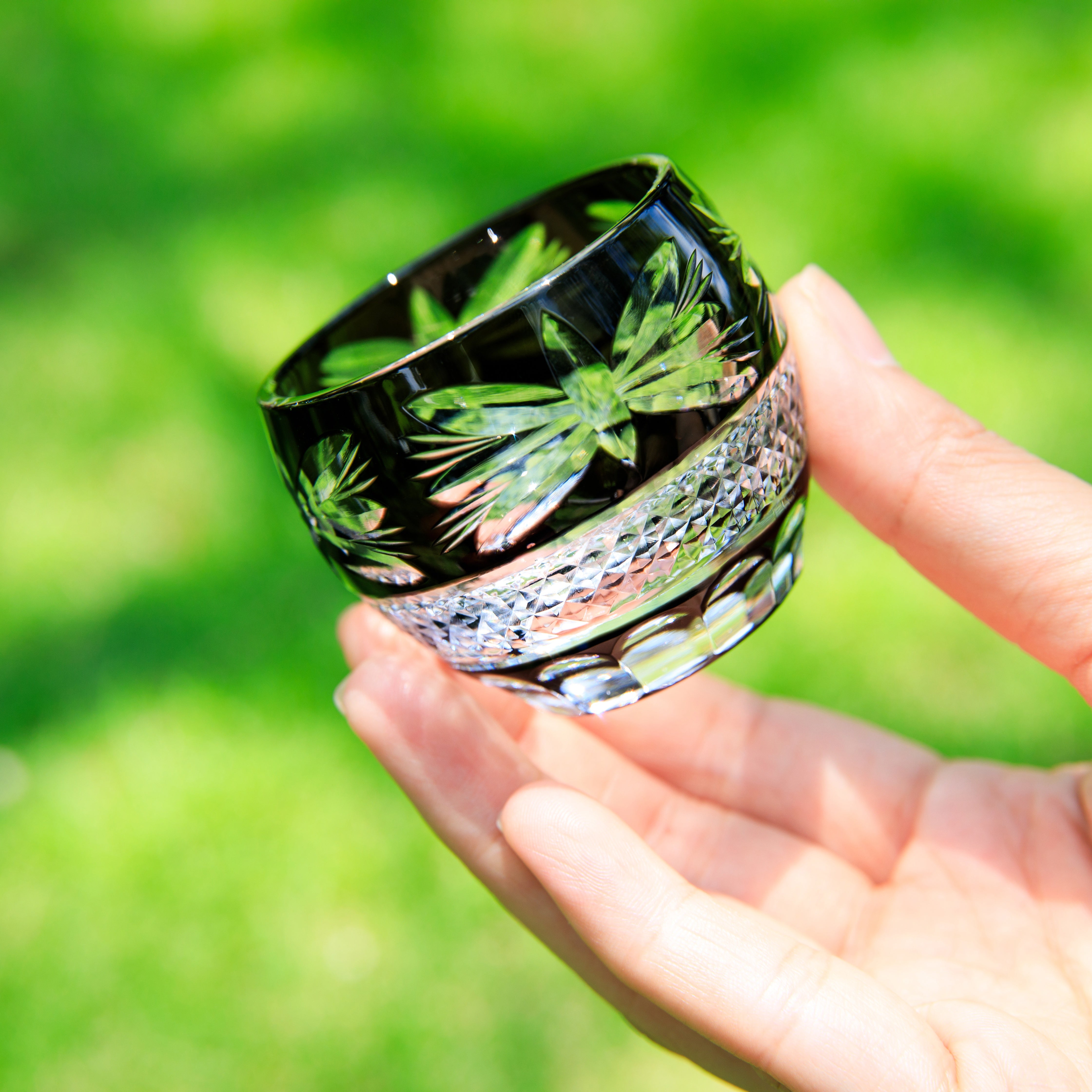
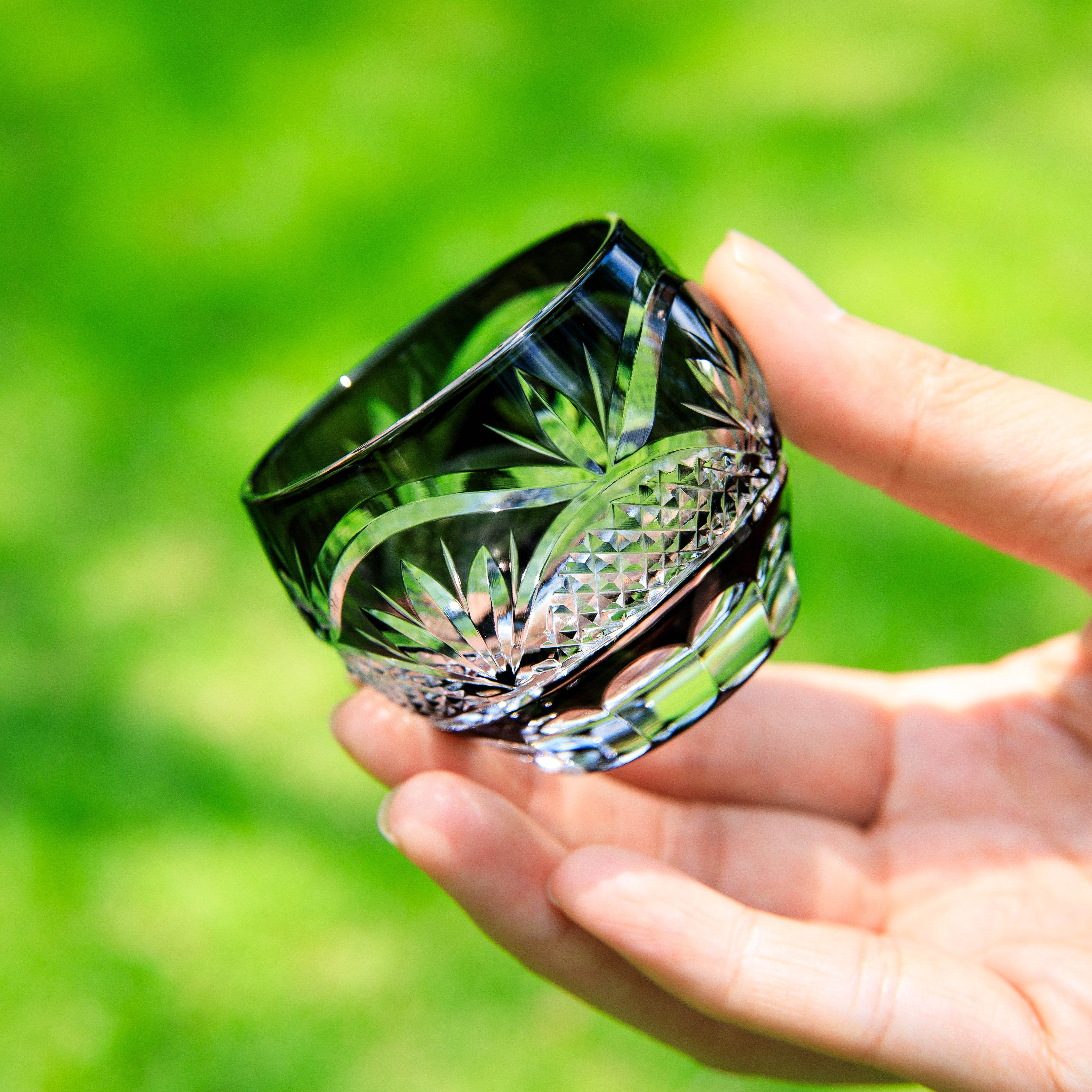
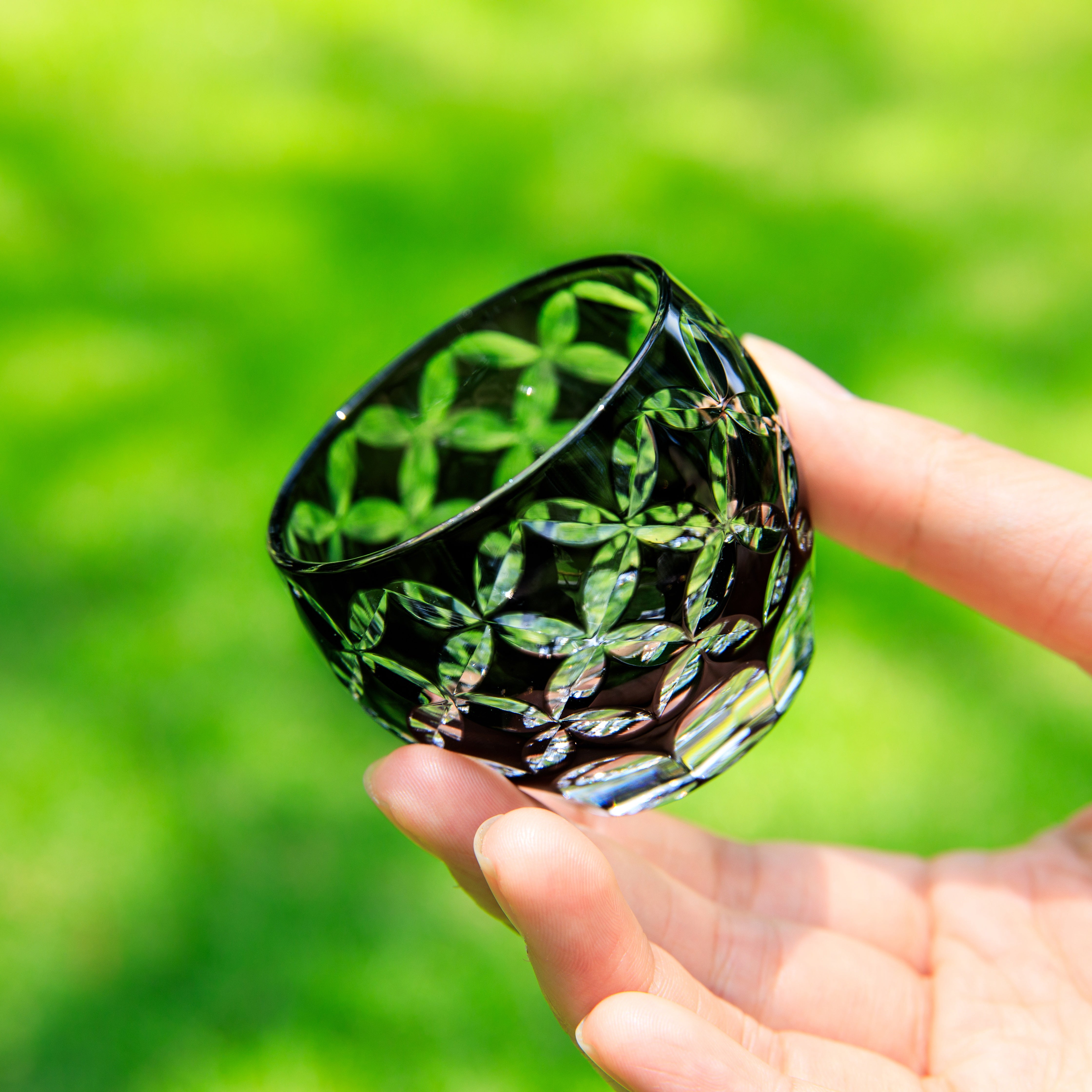
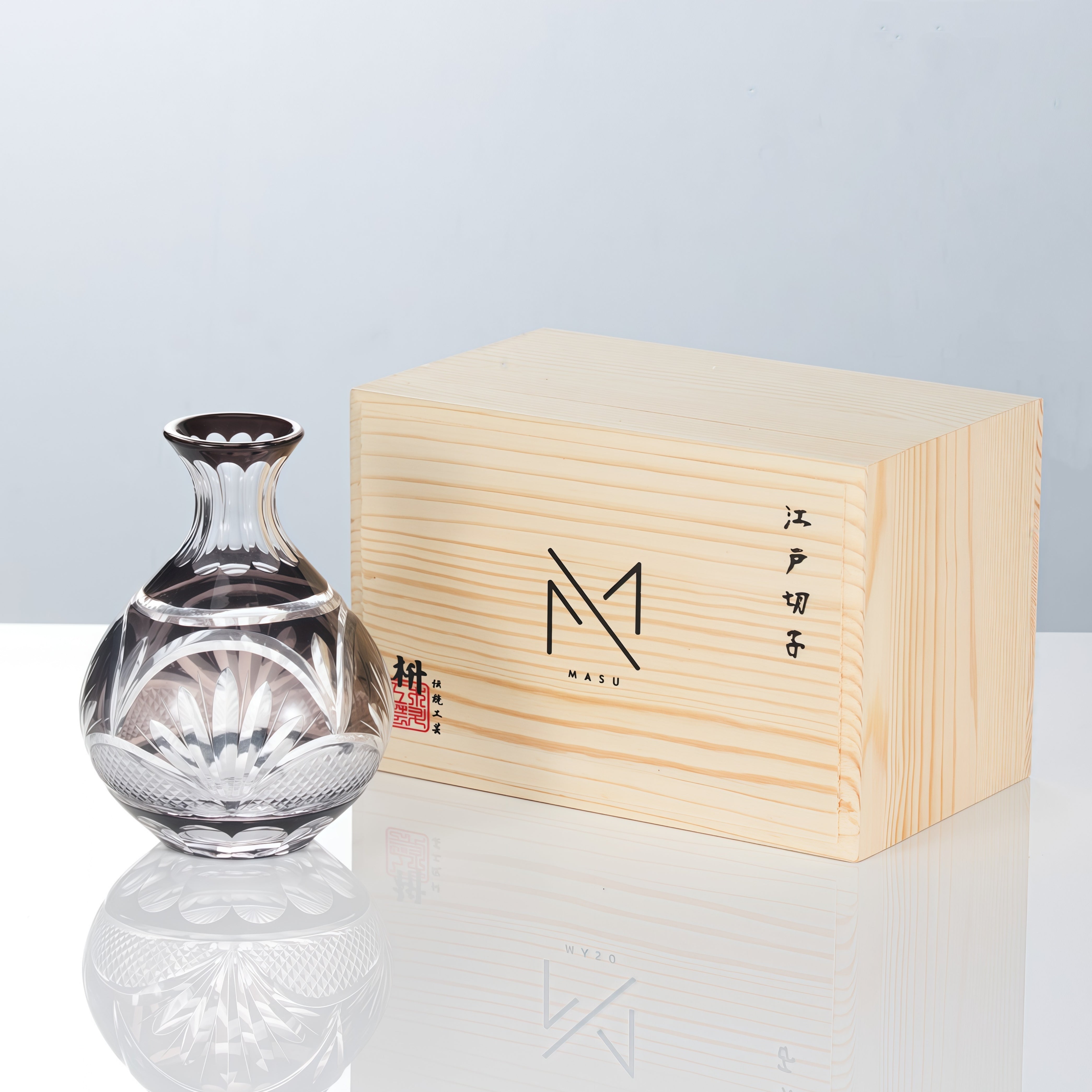
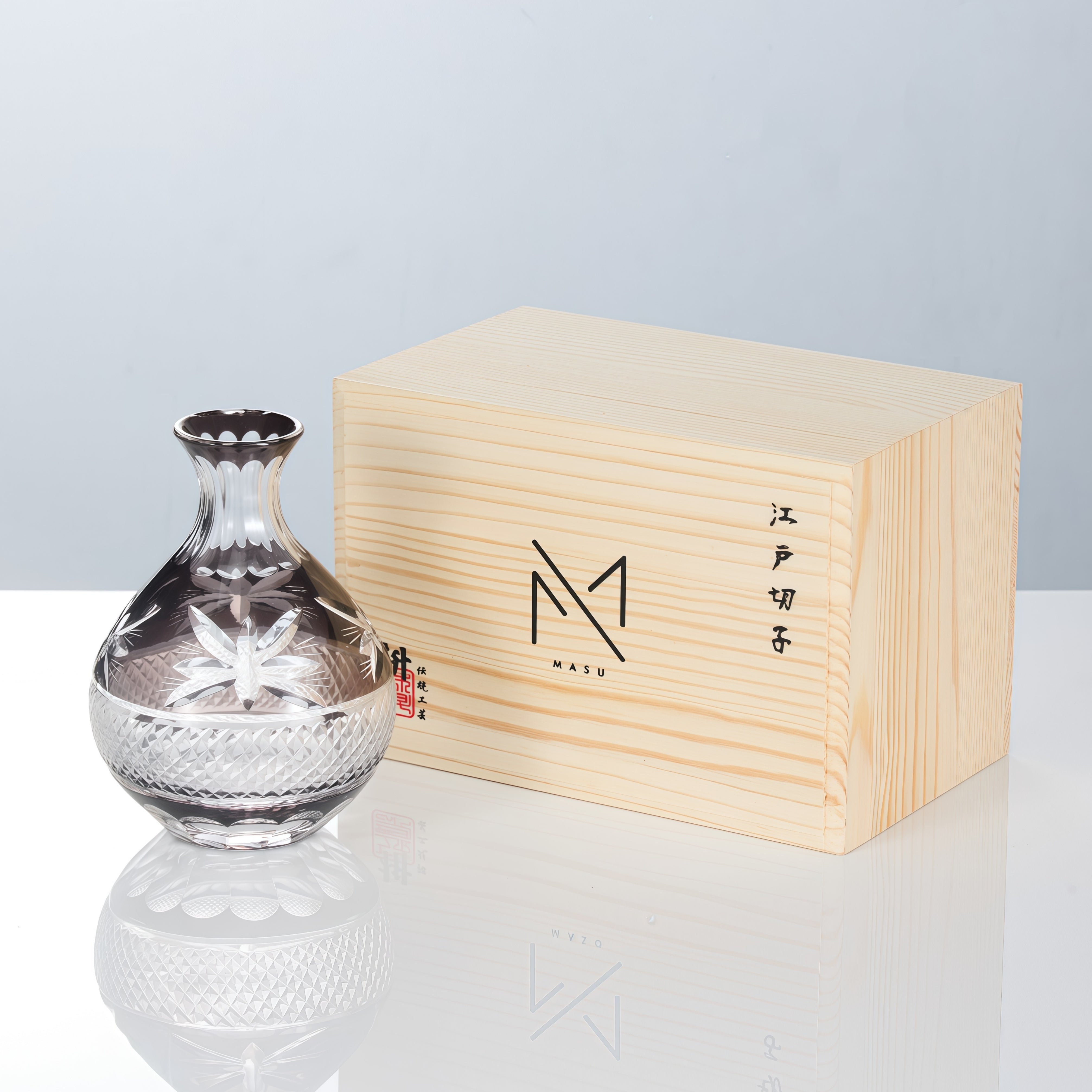
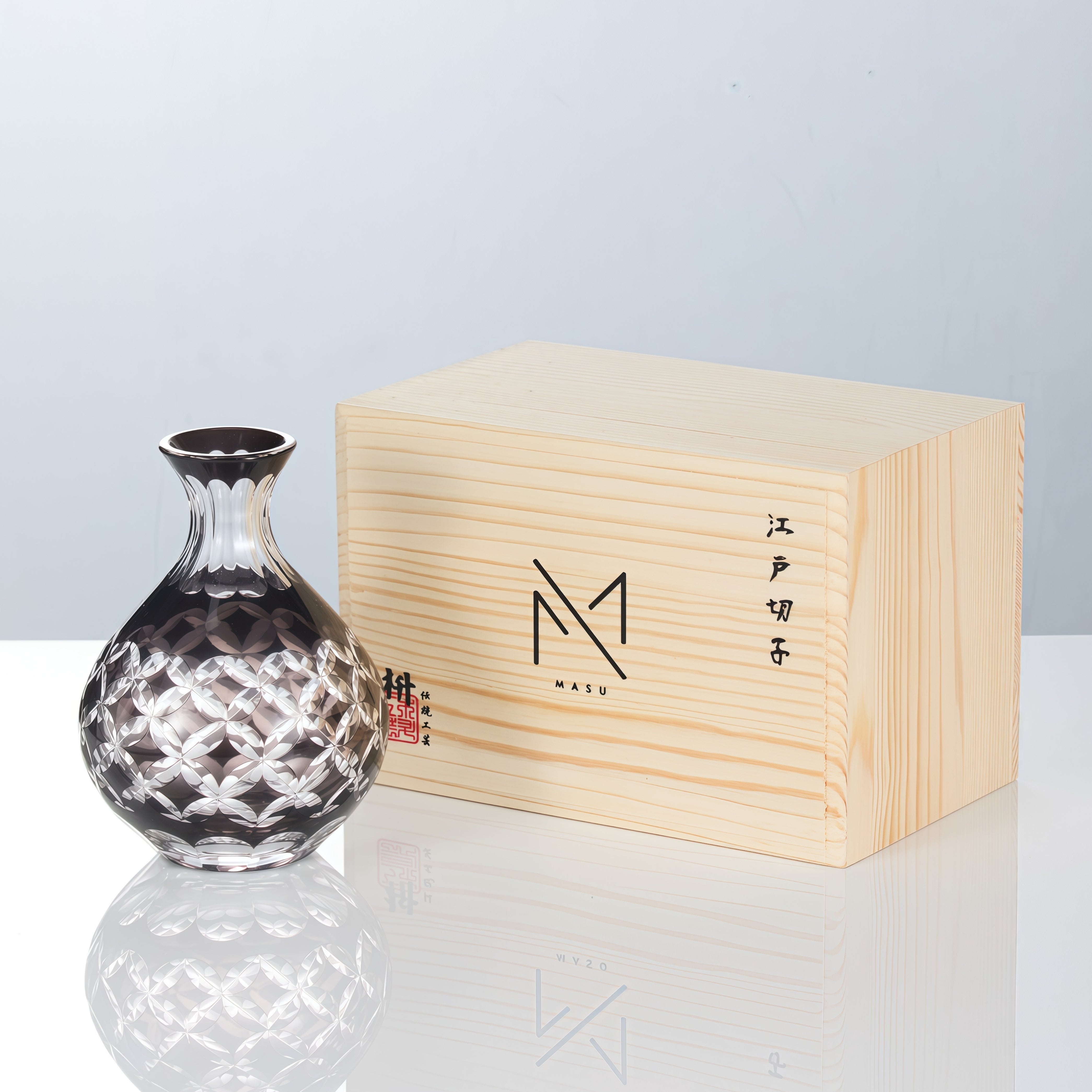
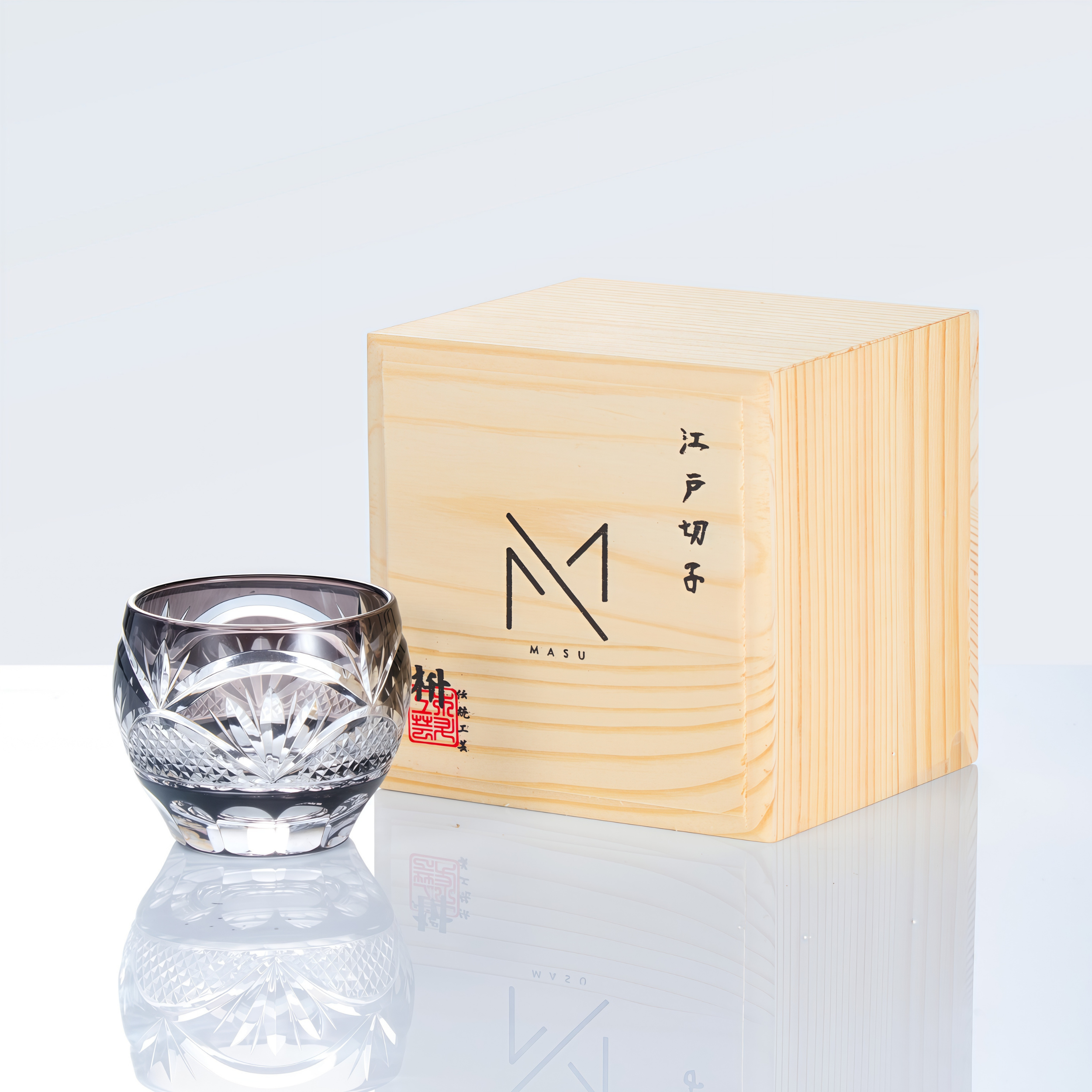
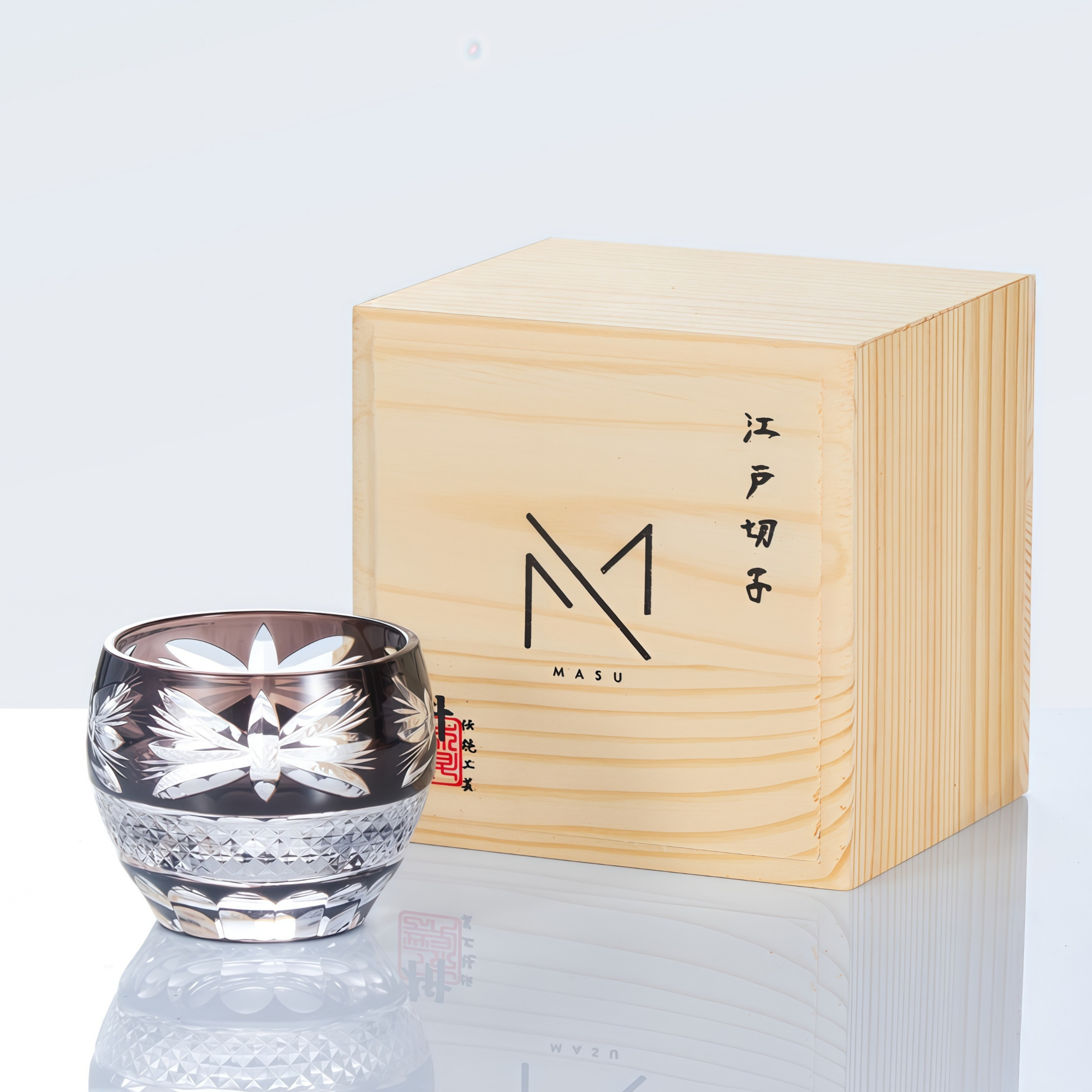
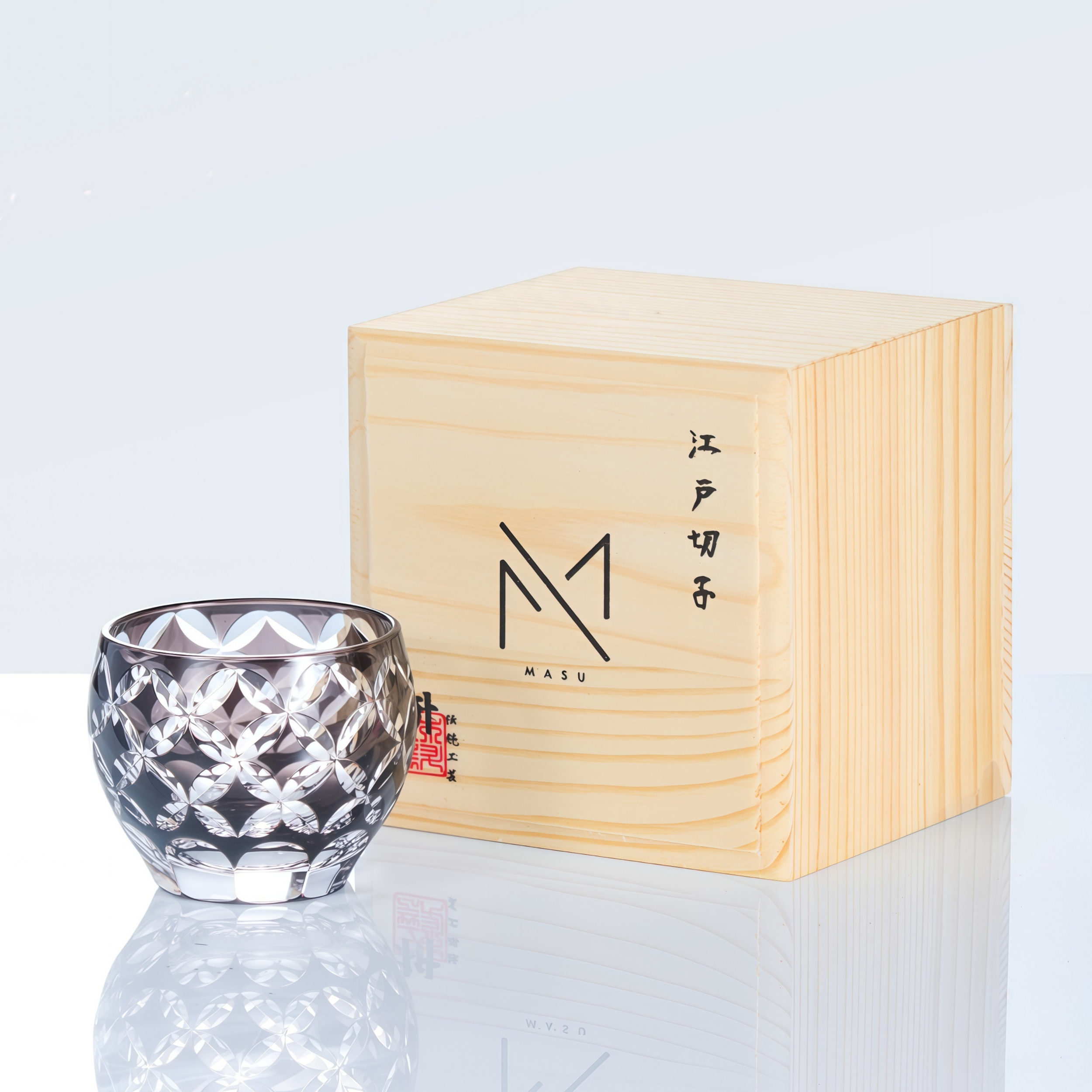
Edo Kiriko Handcrafted Gure Sake Glass Collection
The Edo Kiriko Handcrafted Gure Sake Glass Collection reveals the quiet depth of traditional craftsmanship through a refined palette of smoky black hues. Each piece is carefully hand-cut by skilled artisans, showcasing classic Edo Kiriko motifs such as radiating starbursts, latticework, and floral engravings that shimmer softly under changing light.
This cohesive collection features both sake flasks and matching glasses, crafted to balance visual elegance with everyday usability. The black tone, known as Gure, carries an understated sophistication, its translucent depth evoking the calm of mist and shadow.
Every cut reflects precision and harmony, highlighting the glass’s natural brilliance and the artistry behind each detail. Whether enjoyed in daily rituals or displayed as part of a curated interior, these pieces embody a sense of serenity and timeless design.
Presented in handcrafted wooden boxes, the Gure Collection is a tribute to balance, craftsmanship, and the subtle allure of Edo Kiriko tradition.
• Craft: Edo Kiriko
• Product:
1x Sake Flagon / 1x Sake Glass
Materials
Specifications
Product Care
Shipping
Times
Orders take 2-3 business days to process after placing the order before shipping out.
Standard Shipping Times
• North America
United States (Mainland): 5 - 12 days
Alaska, Hawaii, and other US regions: 10 - 20 days
Canada: 5 - 14 days
Mexico: 10 - 17 days
• Europe: 5 - 12 days
• Australia/New Zealand: 6 - 14 days
• Asia
Southeast Asia: 5 - 8 days
Other Regions: 5 - 14 days
• Latin America: 10 - 20 days
• Other Countries: 10- 20 days
Express Shipping Times: 4 - 8 days
Available for Selected Products in the Following Countries:
• United States(Mainland)
• United Kingdom
• France
• Germany
• Italy
• Austria
• Spain
• Netherlands
Priority Shipping Times: 3 - 5 days
Available for Selected Products in the Following Countries:
• United States(Mainland)
• Canada
• United Kingdom
• France
• Germany
• Italy
• Austria
• Spain
• Netherlands
• Australia
• New Zealand
• United Arab Emirates
• Saudi Arabia
Return, Refund & Exchanges
We offer a 7-day return & exchange policy. For detailed information Return, Refund & Exchanges
Choose options














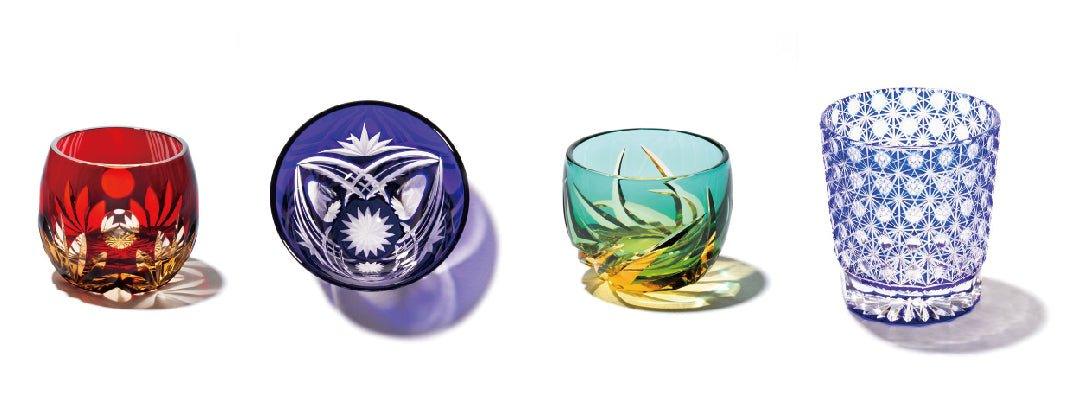
Crafting Of Edo Kiriko
Design
The artist marks simple grid lines on the glass without drawing a design to provide the plan's framework. The design grid is drawn on the glass's surface using a bamboo stick or brush with red iron oxide. Next, the baselines of the design are lightly etched using a whetstone. Relying on these fine marks and lines, the delicate patterns of Edo kiriko are created with the artisan's expertise and skills.
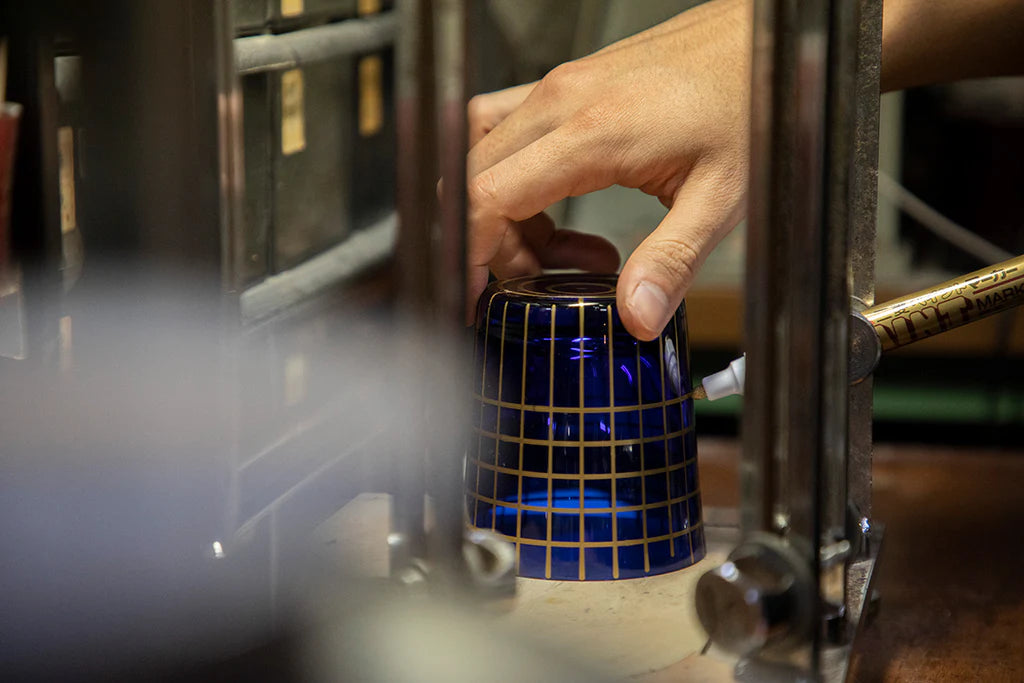
First cuts
The base design is cut to about three-quarters of the final width and depth. The surface of the glass is cut using a sand paste-coated metal disc rotating at high speed. Generally, emery powder with many abrasive particles is used to create the sand paste. The clear pattern border lines and the irregular patterns are cut little by little. The balance between the thickness and depth of the cut lines relies upon the artisan's years of experience, as there are no detailed sketches.
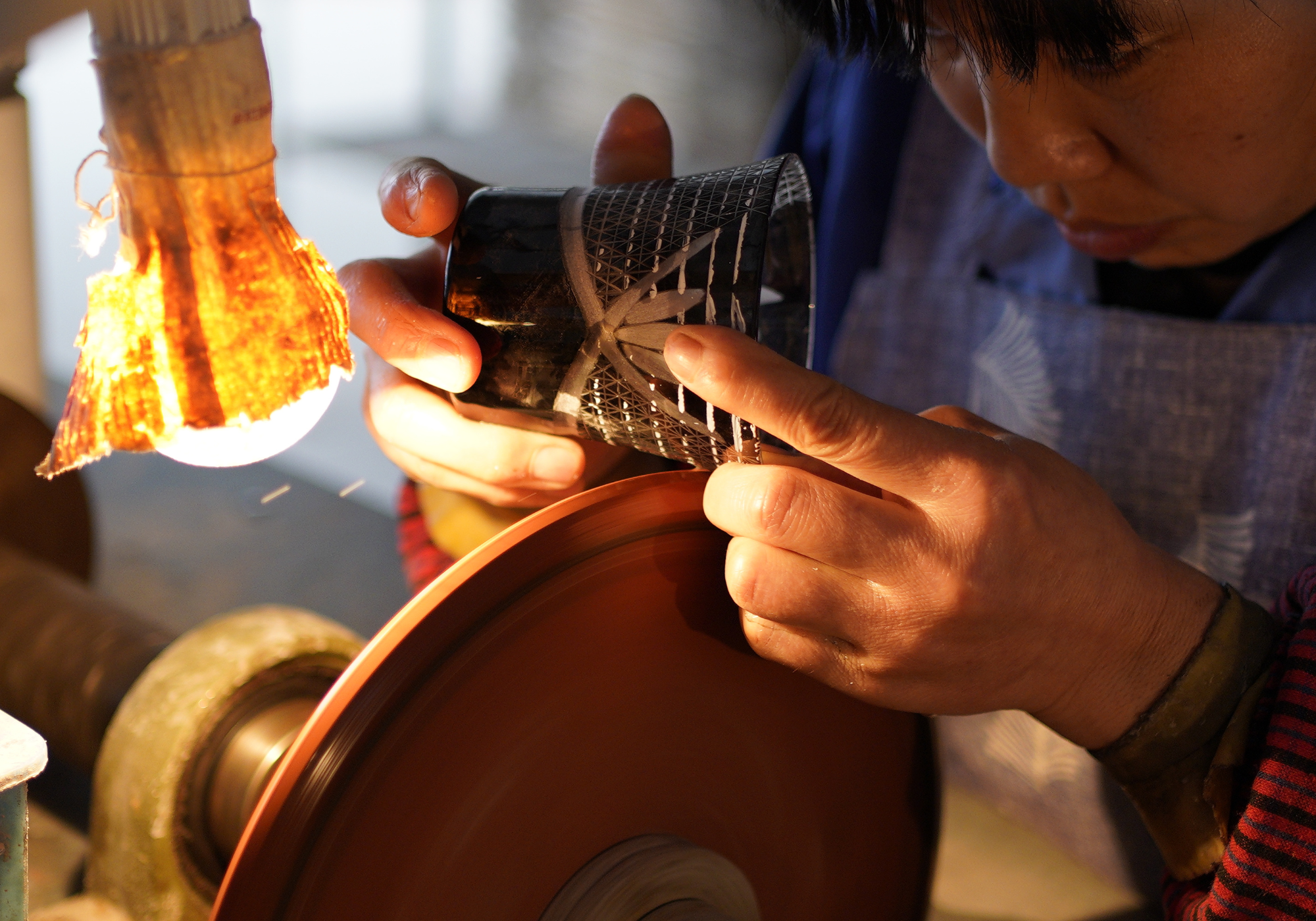
Adjustments
The patterns cut in the second stage are adjusted, and the surface is smoothly polished in this process. A whetstone disc, natural or artificial, is used to cut delicate patterns which cannot be created with the metal disc used in the prior process. This is the last cutting stage to complete the designs, so careful work is required not to leave any powder residue and to ensure a brilliant finish.
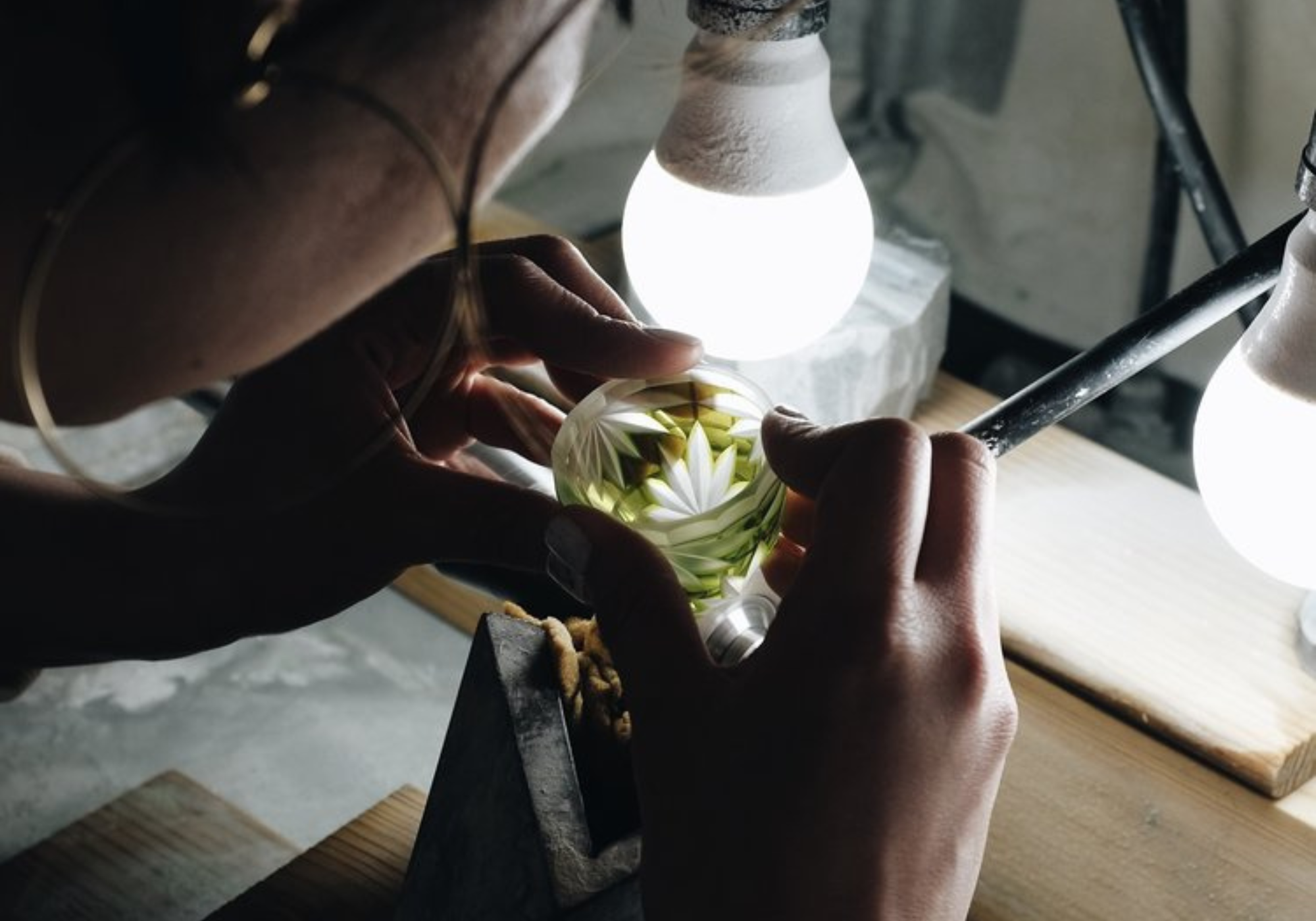
Polishing
This is the final stage of production, and it is usually carried out on soda-lime glass (most prevalent type of glass). The opaque surface left by the third stage is returned once more to its original transparent state, with the attractive shine and sparkle typical of Edo kiriko. Chemical processing with hydrofluoric acid is also applied for high-class crystal glass. Depending on the piece, a variety of different polishing discs are used, such as paulownia wood discs, willow wood discs, hair brush discs, and belt discs. The final work is polished by applying water and polishing powders to obtain a glittering finish, while fine sections are polished with a cloth or a brush. To complete the final polishing, a cloth buffing disc is used to bring out the sparkle and shine of the cut glass.

